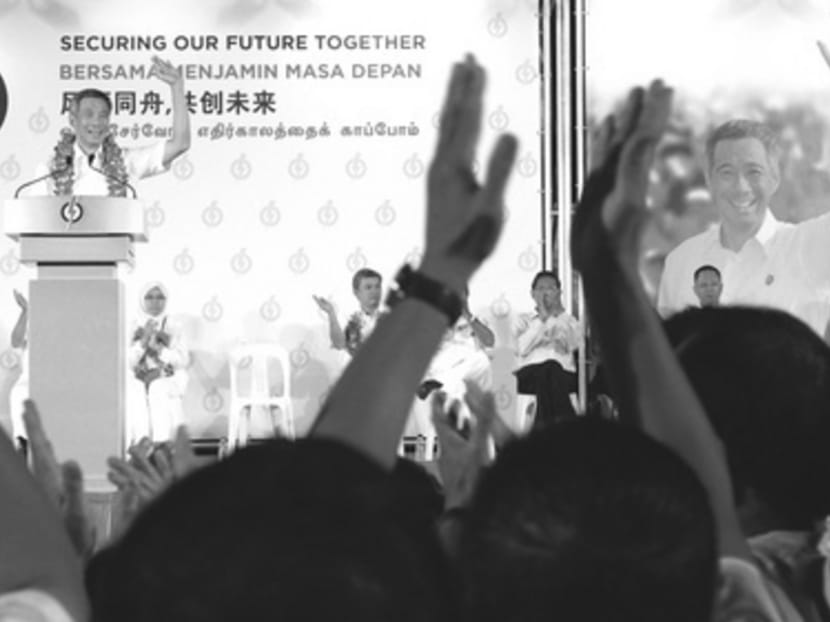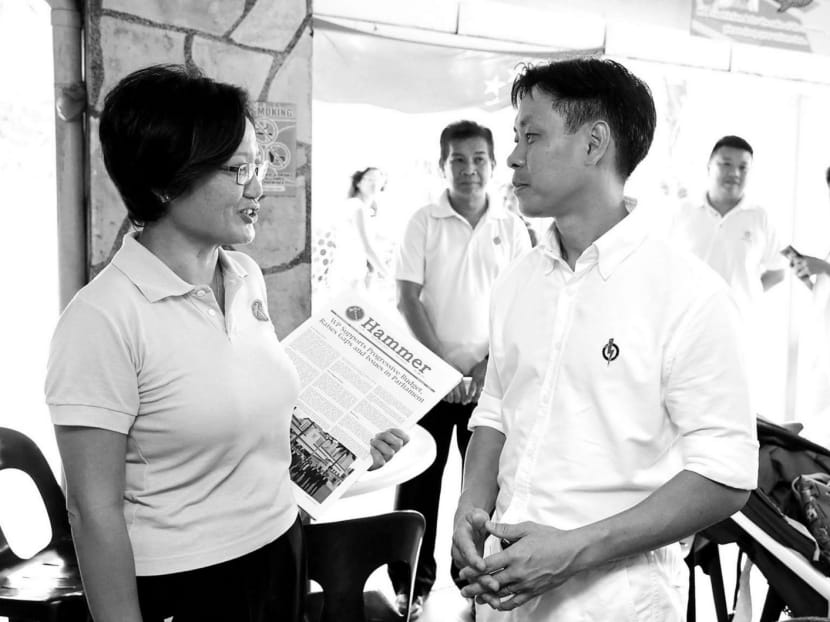Voters must decide on outcome that gives S’pore best chance to thrive
The battle for the hearts and minds of Singaporeans is now in earnest. The battle lines are drawn and the slate of candidates confirmed. Formal campaigning has begun, with General Election (GE) 2015 set to be a landmark, watershed parliamentary election in our 50-year history.


The battle for the hearts and minds of Singaporeans is now in earnest. The battle lines are drawn and the slate of candidates confirmed. Formal campaigning has begun, with General Election (GE) 2015 set to be a landmark, watershed parliamentary election in our 50-year history.
In the remaining eight days of campaigning, there will be a robust and even aggressive contest — of manifestos, personalities, political wills and issues. For the first time, there will be no walkovers as nine political parties and two independents contest all 89 seats. The calibre of candidates has generally improved, in tandem with voters’ expectations. Voters’ interest is also high.
The ruling People’s Action Party (PAP) will be intent on halting the decline in its share of the popular vote. A good performance for the PAP would be one where it stops the erosion of its popular vote share and also keeps the main opposition party, the Workers’ Party (WP), to no more than seven elected seats in Parliament.
Given the massive effort made since 2011 to address voters’ concerns on housing, transport, healthcare and immigration, further loss of political support will be highly challenging to the PAP with regards to how it would govern in its next five-year term.
Ultimately, the outcome of this GE could pivot on the relationship between the number of elected opposition Members of Parliament (MPs) and the PAP government’s changes in policy and engagement of the electorate since the last GE.
Do voters see it as a causal relationship or is it a mere correlation?
If voters regard the changes in government policy as being primarily driven by the largest number of elected opposition MPs — despite Deputy Prime Minister Tharman Shanmugaratnam saying the policy changes did not begin in 2011 and policy shifts began much earlier — then even if the electorate’s unhappiness on the hot-button issues have been satisfactorily addressed, that may not necessarily result in voters flocking back to the arms of the PAP.
Similarly, voters might opt to look beyond the town council issue that the WP is embroiled in, and place more weight on the WP’s intrinsic value as the leading opposition party and its role in Singapore’s evolving political landscape where the idea of one-party dominance is increasingly being challenged. If this is the case, it would also undercut the PAP’s political dominance.
However, if voters regard the changes in government policy as being merely correlated with the largest opposition presence in Parliament, then the PAP government’s efforts in the past four years will yield political dividends at the ballot boxes. In this scenario, Singapore’s one-party dominant system, in place since 1959, is likely to continue.
But if the WP is able to foil the PAP’s persistent attacks on its supposed lack of competency and integrity in managing town councils, then it may still be able to make further inroads.
This would be a double whammy for the PAP. It means a main plank of the PAP’s strategy would have faltered and that it could have otherwise devoted more of its electoral firepower to its enviable track record in governance — not just over the last parliamentary term but also the past 50 years.
DECIDING SINGAPORE’S FUTURE
If the WP succeeds in doing so, Singapore may well be moving away from the one-party dominant system to a two-party political system. In the 1991 GE, the Opposition won four single seats — back then the most number of seats since independence.
However, this electoral feat was short-lived as the PAP clawed back two seats in the next GE in 1997. Between 1997 and 2011, the Opposition was kept at bay with only two elected seats, courtesy of Mr Chiam See Tong and Mr Low Thia Khiang.
In this election, Singaporeans will decide whether to give the WP the opportunity to consolidate and build on its gains of seven elected seats, or enable the PAP to stymie or even roll back the WP’s gains and ascendancy.
As for the non-WP opposition, this election may see some of them sink deeper into political irrelevance in a more competitive political landscape.
While this election is about many things — including leadership renewal, which Prime Minister Lee Hsien Loong has reiterated on various occasions, as well as the airing of hot-button issues — it is ultimately about voters deciding the electoral outcome that will enhance the nation’s ability to continue to thrive in a more competitive global landscape.
Thus, voters must rise to the occasion and raise their game as much as they expect the contesting political parties and their candidates to do too.
How dominant must the PAP be, or will a Parliament consisting of more elected opposition MPs result in better governance? How do voters strike the delicate balance between the need for a strong Government with the growing desire for more checks and balances as well as a vibrant and credible Opposition?
This is what GE 2015 is about.
ABOUT THE AUTHOR:
Eugene K B Tan is associate professor of law at the Singapore Management University School of Law.






